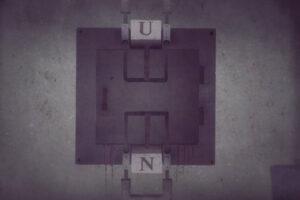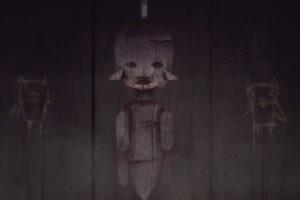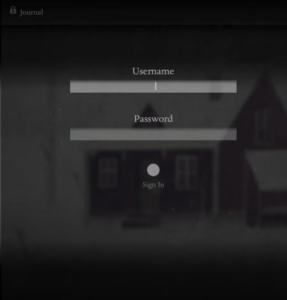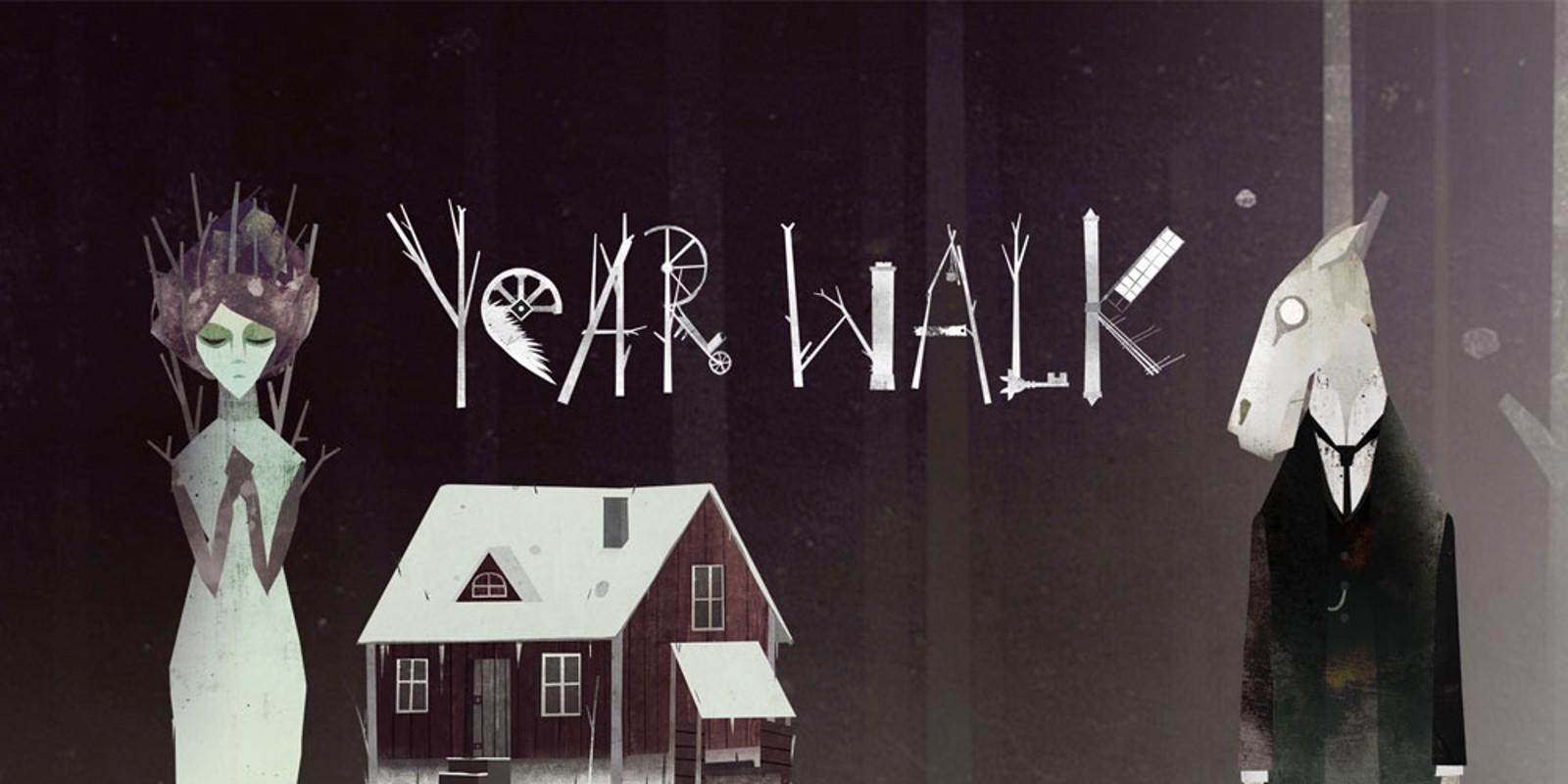For this week’s critical play, I played Year Walk. Year Walk is an adventure game developed by Simogo. It is available on iOS, Wii U and PC. I played the game on PC via Steam.
Year Walk uses mystery as a core part of its narrative, by not revealing the narrative explicitly to the player, but having the player piece it together from solving various puzzles and uncovering hidden clues across the world. In Year Walk, we play as a character who embarks on the titular Year Walk. They wander through the woods at midnight and encounter many supernatural phenomena along the way. At the start, the game reveals very little about the setting. The player doesn’t know who is the character they are playing as, what the purpose of walking through the woods is, or what is the true nature of the supernatural encounters. However, as the player progresses through the game and solves the various puzzles, they start to get a clearer picture of the narrative.
The core gameplay loop of Year Walk involves solving puzzles to get past each watcher, which are (as revealed much later on in the game) supernatural beings that protect the space-time balance of the world. These puzzles are all pretty ingenious and importantly tie into the backstory of each watcher, which reveals the narrative to the player in an indirect way. For example, one of the watchers is the Myling, which are lingering souls of unwanted children murdered by their mother. The Myling arc of the game involves finding four Mylings in the woods and helping them find their way to the other side. One of the puzzles in this arc requires the player to open a locked kiln. There are two locks to the kiln, one with the letter “N” and one with the letter “U”. At first glance, there is no apparent way to unlock the kiln, but the player has to think out of the box and click on the letters “N” and “U” on the keyboard to open the kiln and unveil the Myling hidden behind. This puzzle adds to the narrative by indirectly implying to the player that this particular Myling is probably the result of a mother throwing her unwanted child into the kiln. The dynamics of solving difficult puzzles to uncover the narrative creates the aesthetics of challenge and discovery. Players are able to find enjoyment going through these loops, both from solving these puzzles, which appeal to the psychological need for achievement, as well as from unveiling the narrative, which appeals to the psychological need for information.

A prominent feature of Year Walk’s setting is the way it encapsulates the mystery with an ominous and spooky atmosphere, which fits the overall narrative. The woods that the player walks through are dark and surreal. Many puzzles also feature jump scares and blood. These aesthetic details emphasize the dark backstory of the watchers. They also fit the context of the Year Walk, which in the real world is an old Swedish ritual conducted at the midnight of New Year’s Eve, where people walk through the dark woods for visions of their future. The supernatural encounters that people report on the Year Walk are believed to be hallucinations from hypothermia and hunger. The surreal vibe of the game makes the player wonder at the end of the game, after all the mysteries are revealed, whether what they played was real or just in the mind of the main character, Daniel. The spooky setting creates the aesthetic of sensation as the players are able to experience the world directly from the eyes of Daniel.

The architecture of Year Walk’s setting is also unique in that it uses not just the core gameplay loop but also extra features to support the mystery. The game features an encyclopedia describing the various watchers, as well as an unusual journal login page with a username and password field. These features are modern and appear not to fit in with the setting of the game, which takes place more than a century in the past. The journal login page, in particular, is not used all the way until the end of the game, keeping the player wondering throughout the game what is its true purpose and why does it exist at all. As it turns out, these features are also puzzles that the player eventually solves, leading to the true ending of the game. The journal is actually a research log of a modern researcher on the Year Walk ritual. When the player finally unlocks this journal at the end of the game, they reveal the final mystery and reach the true ending, where some time travel shenanigans happen and Daniel kills himself to prevent his Year Walk from ever happening. This mystery is successful because its presence in the background throughout the game creates a great payoff when it is finally solved, perfectly establishing the aesthetic of discovery. It reinforces the core message of the game that trying to divine the future is a futile endeavor.





